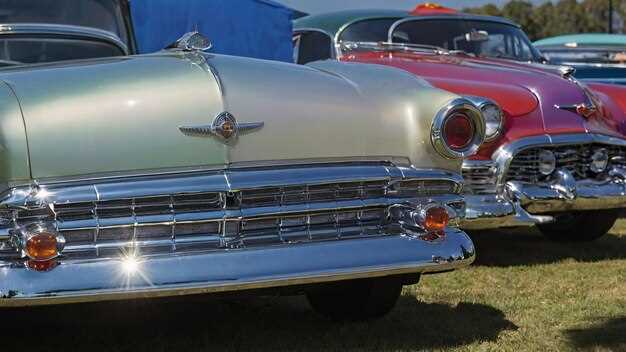
When it comes to classic cars, proper storage and preservation are critical for maintaining their value and performance. These vehicles, often deemed as automotive treasures, require careful attention during periods of non-use to ensure they remain in pristine condition. Without the right measures in place, even the most iconic classics can suffer from deterioration and mechanical issues over time.
Understanding the best practices for long-term storage is essential for every classic car owner. Common elements to consider include the environment in which the car will be stored, fluid management, and protective measures against pests and corrosion. Implementing these strategies will not only safeguard your investment but also enhance the driving pleasure when it’s time to hit the road again.
From choosing an appropriate storage facility to performing routine maintenance checks, this guide aims to provide detailed insights into effective preservation techniques. By following these tips, classic car enthusiasts can ensure their beloved automobiles are well-protected, ready for any future adventures.
Preparing Your Classic Car for Extended Storage

To ensure the preservation of your classic car during long-term storage, it’s essential to follow a systematic approach. Begin by thoroughly cleaning both the exterior and interior of the vehicle. Wash and wax the body to protect the paint from dust and moisture. Vacuum the interior and wipe down surfaces to prevent mold and unpleasant odors from developing.
The next step involves addressing the fluids. Change the oil and filter to eliminate contaminants that can cause corrosion. Fill the gas tank to prevent moisture accumulation, and add a fuel stabilizer to keep the fuel fresh. Don’t forget to check and top off other fluids, including coolant, brake fluid, and transmission fluid.
Consider the tires as well. Inflate them to the recommended pressure. If possible, use jack stands to relieve weight from the tires and suspension. This will prevent flat spots from forming over time.
Disconnect the battery to prevent drainage. If long-term storage exceeds several months, you may opt to remove the battery entirely for maintenance. Place it in a cool, dry area and consider using a battery maintainer to keep it charged.
A proper storage space is critical for preservation. Choose a climate-controlled environment, preferably indoors, to protect the car from extreme temperatures and humidity. Make sure the area is dry, and avoid placing it near windows to prevent sunlight damage.
Cover your classic car with a breathable cover. This will shield it from dust while allowing moisture to escape, preventing rust and mildew from forming.
Finally, keep a detailed log of maintenance and storage conditions. This record can help you track necessary tasks and identify any issues that may arise during the storage period. By following these steps, you can ensure that your classic car remains in pristine condition, ready for the road when you are.
Choosing the Right Environment for Car Storage

When it comes to long-term preservation of classic cars, selecting the appropriate storage environment is crucial. A well-chosen space can significantly reduce the risk of deterioration caused by environmental factors.
Temperature Control: Optimal temperature plays a vital role in the preservation of your classic car. Ideally, the storage area should maintain a stable temperature between 50°F and 70°F. Extreme fluctuations can lead to rust formation, tire degradation, and damage to other components.
Humidity Levels: High humidity can foster mold growth and corrode metal surfaces. Aim for humidity levels around 40% to 60%. Using a dehumidifier in your storage area can help to maintain these levels and protect your vehicle from moisture-related damage.
Lighting Conditions: Exposure to direct sunlight can fade paint and damage interior materials. Choose a storage solution that minimizes light exposure. If possible, opt for a dark, enclosed space or protect windows with UV-filtering film to reduce the risk of sun damage.
Ventilation: Adequate airflow is necessary to prevent stagnant air, which can lead to musty odors and moisture buildup. Ensure that your storage area is well-ventilated, allowing fresh air to circulate while keeping the environment stable.
Floor Surface: The flooring of your storage area should be clean and dry. Concrete floors can retain moisture, so consider using a protective mat to avoid direct contact with the ground, which can lead to rust on the vehicle’s undercarriage.
In summary, the right environment for car storage is one that maintains consistent temperature and humidity levels, minimizes light exposure, ensures proper ventilation, and utilizes suitable flooring. Taking these factors into account will greatly enhance the preservation of your classic car over the long term.
Maintenance and Care During Long Term Storage
Effective maintenance and care during the long-term storage of classic cars are crucial for their preservation. Proper preparation before storing your vehicle can prevent future complications and ensure that it remains in excellent condition.
Start with a thorough cleaning of the exterior and interior. Removing dirt and debris helps prevent corrosion and mold growth. After washing, apply a high-quality wax to the paintwork for an added protective layer. In the interior, vacuum and clean surfaces to minimize dust accumulation.
Fluids must be addressed before storage. Change the engine oil and filter to eliminate contaminants that can lead to engine wear. Fill the gasoline tank to prevent moisture buildup, and consider adding a fuel stabilizer to keep the fuel fresh during storage. Additionally, check and top off the coolant and brake fluid as needed.
Proper tire care is essential since flat spots can develop if a vehicle is stationary for too long. Inflate the tires to the recommended pressure and consider placing the car on jack stands to relieve weight from the tires. This will enhance the preservation of both the tires and the suspension system.
Battery maintenance is vital during storage. Disconnect the battery to prevent drainage, or utilize a maintenance charger to keep it charged without risk of overcharging. This will ensure that the battery remains functional when you’re ready to use the vehicle again.
Ensure that the storage environment is controlled. Choose a climate-controlled space, if possible, to minimize temperature fluctuations and humidity. Cover the vehicle with a breathable car cover to protect it from dust while preventing moisture accumulation that could lead to rust.
Regular check-ups during the storage period can help identify any potential issues before they escalate. Inspect the vehicle occasionally to check for leaks, pest infestations, or any signs of weather-related damage. Early detection can save time and expense in the long run.
By implementing these maintenance and care strategies during long-term storage, you can significantly enhance the preservation of your classic car, ensuring it remains a cherished piece of automotive history for years to come.


